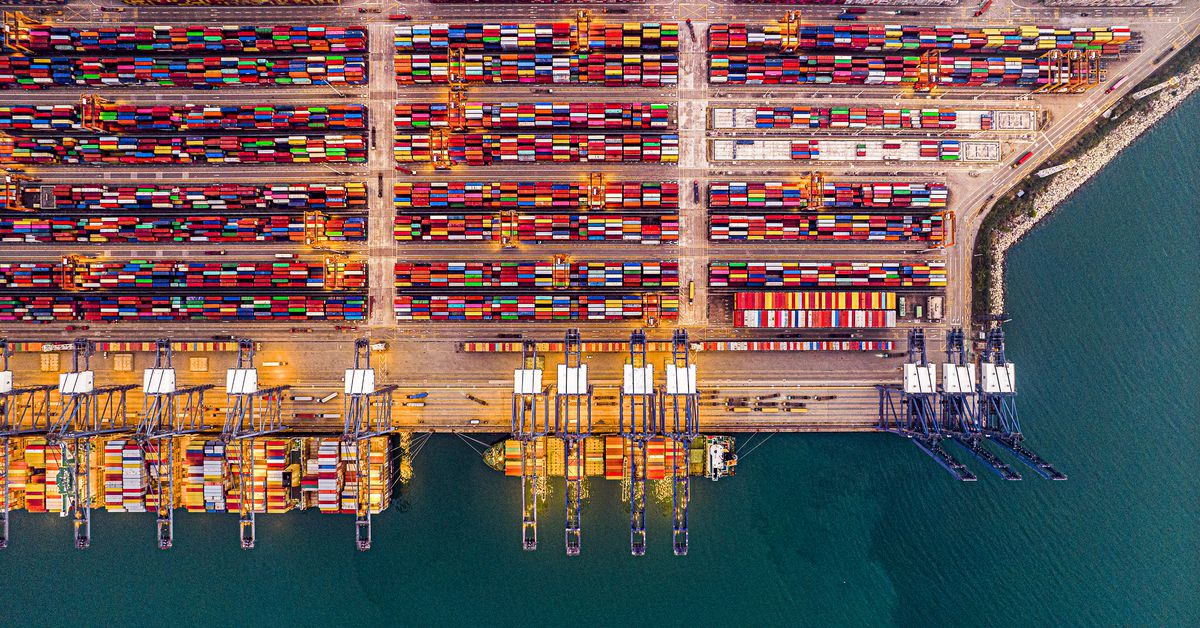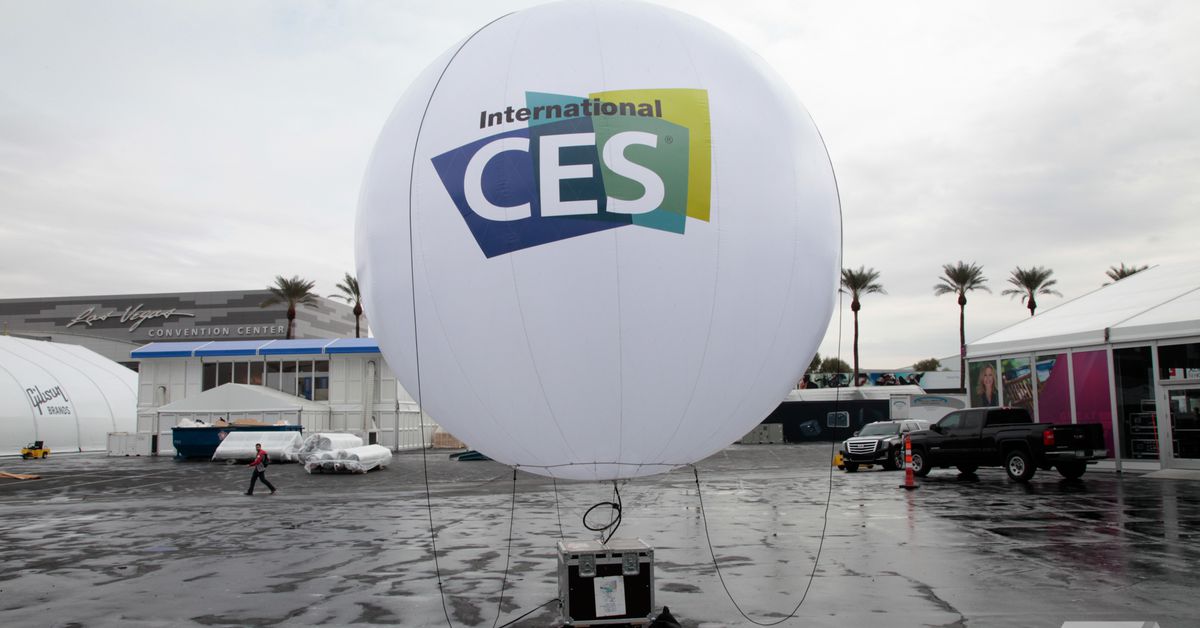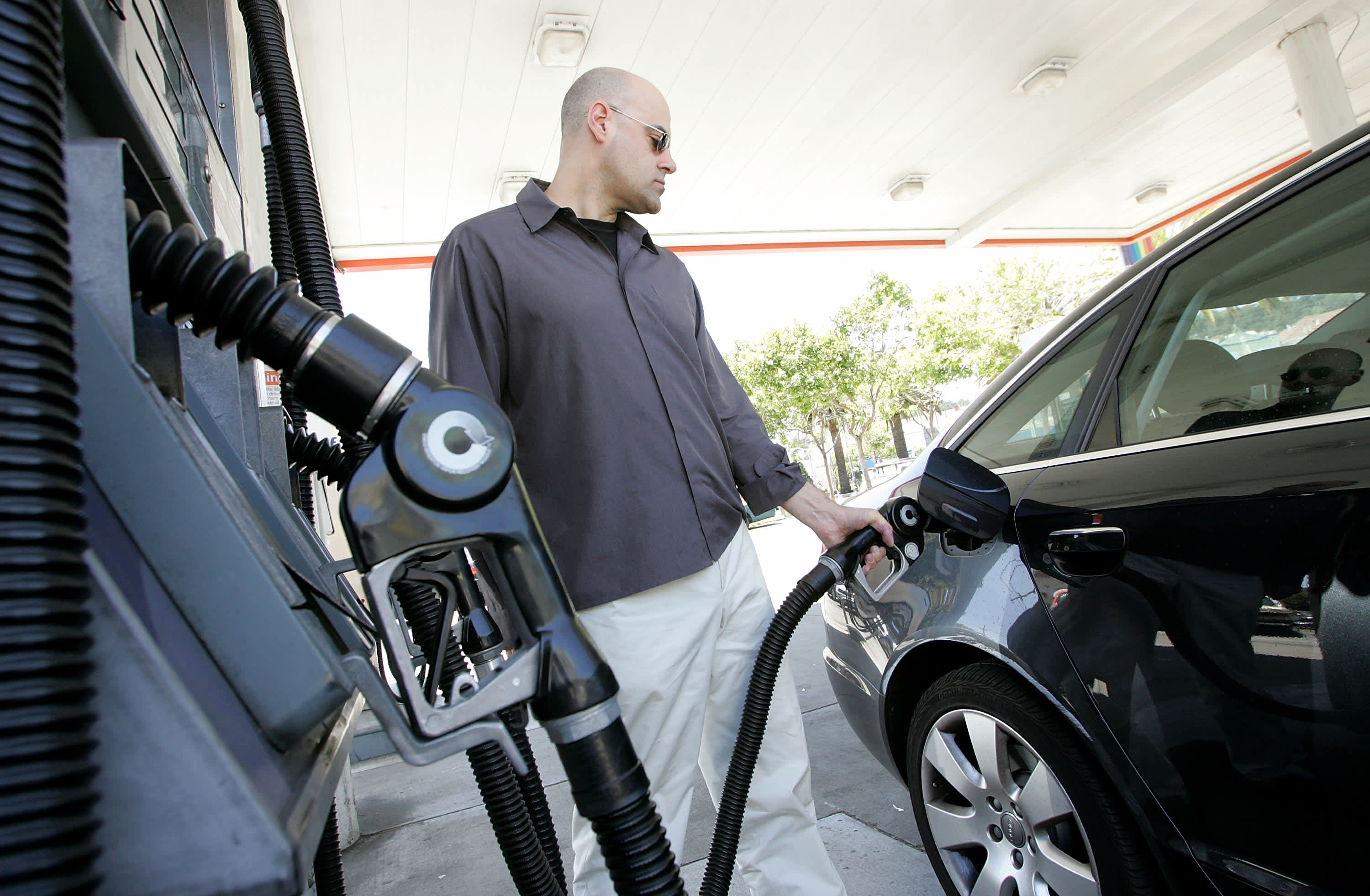The uncharted waters of zero-emissions shipping
Shipping containers stacked at Shenzhen Yantian Port in China. The largest container ships burn 66 gallons of fuel per minute while underway. | He Qijie/VCG via Getty ImagesContainer ships are major polluters and a tough challenge for the global...

This story is part of Recode by Vox’s Tech Support series, which explores solutions for our warming world.
Last year, the world’s largest container ship set sail. The gargantuan Ever Ace, owned by Taiwanese firm Evergreen Marine, is 1,312 feet long, 206 feet wide, and can fit 23,992 20-foot shipping containers. Imagine the Empire State Building tipped over on its side and scooting along at 25 miles per hour, and you’ll get an idea of the scale.
Of course, moving an enormous vehicle like this demands a massive power plant: a towering 11-cylinder two-stroke engine yielding 95,000 horsepower. The stroke of its pistons is almost 12 feet. And like most cargo ships, it runs on one of the dirtiest fuels on the planet.
Known as bunker fuel or heavy fuel oil, the stuff that powers giant ships is literally the bottom of the barrel. It’s a thick sludge that has to be heated to 104 degrees Fahrenheit just to flow enough to be pumped. The exhaust it produces is filled with noxious chemicals. According to the International Council on Clean Transportation (ICCT), pollution from shipping contributes to about 60,000 premature deaths per year. Container ships are especially thirsty, with the largest burning more than 66 gallons of fuel per minute underway.
But heavy fuel oil is cheap and abundant. That combination poses an immense challenge for shippers and for the climate. The shipping industry accounts for about 3 percent of global greenhouse gas emissions, which is comparable to the total emissions from aviation. If it were its own country, shipping would rank around sixth in the world for its contributions to climate change.
:no_upscale()/cdn.vox-cdn.com/uploads/chorus_asset/file/23392409/GettyImages_1235744978_copy.jpg) The world’s largest container ship, the Ever Ace, can fit nearly 24,000 containers and is over 1,300 feet long.Ajith Perera/Xinhua via Getty Images
The world’s largest container ship, the Ever Ace, can fit nearly 24,000 containers and is over 1,300 feet long.Ajith Perera/Xinhua via Getty Images
Global demand for shipping is also growing, and if the sector doesn’t clean up, its harm to the climate will grow, too. According to the International Maritime Organization, the United Nations agency regulating shipping, emissions may grow to 130 percent of 2008 levels by the middle of the century if left unchecked. And it’s not just the ships that are concerning for the climate; the sprawling ports they use, with their trucks, tugboats, generators, and fuel pumps, are also major greenhouse gas emitters.
At the same time, global average temperatures are rising, and time is running out to keep global warming in check. Another UN group, the Intergovernmental Panel on Climate Change, reported that global emissions would have to fall by half by 2030 in order to keep the planet from warming up past 1.5 degrees Celsius this century. The IMO’s target — cutting emissions from shipping in half by 2050 relative to 2008 levels — is much slower. Yet even this target is getting expensive. Shipping economist Martin Stopford last year estimated meeting this goal would cost the industry $3.4 trillion.
Is it possible then to grow the global shipping industry and reduce its impact on the climate at the same time?
Some major shipping companies think so. A few have set even more ambitious climate targets for themselves, beyond what regulators have imposed. “Delay is the name of the game for most of the industry, except for the leaders who have enough resources to get ahead of the curve,” said Bryan Comer, the marine program lead at ICCT.
These companies don’t just want to trade credits and buy carbon offsets to meet their targets, either. They want to decarbonize the ships completely, ensuring that the largest vehicles on earth have zero impact on the climate. It’s a Brobdingnagian challenge, requiring the development and deployment of completely new energy technologies around the world at a frenetic pace, including biofuels and powertrains running on hydrogen, methanol, or ammonia.
But if you can decarbonize a container ship, you can decarbonize just about every other heavy-duty vehicle. And since so much of the world’s economy depends on shipping, every sector that relies on it will also experience lower emissions across their supply chains. The effort to clean up the shipping industry will ripple across all of the world’s oceans, into every port, industry, and business.
Why some shippers are moving faster on climate change than regulators
Shipping lanes are the arteries of the global economy, and the ships within them are the blood cells carrying the vital nutrients entire countries need to survive. Food, fuel, medicines, ores, minerals, laptops, sneakers, televisions, toys, flat-pack furniture, flashlights, T-shirts, cars, bicycles, books — close to 90 percent of cargo in the world travels via container ship.
We learned last year how costly it can be if one of those arteries gets blocked when the Ever Given container ship ran aground in the Suez Canal. The stuck ship halted about $10 billion worth of trade for each of the six days it was stuck. And the Covid-19 pandemic illustrated just how devastating it can be when ports become congested and international shipping slows down. Stores sit with empty shelves. Businesses close. Prices rise.
But much of this circulation is on the high seas, where it’s difficult to keep track of what vessels are doing and how much they’re polluting.
“This is a sector that’s not used to public accountability, or even public awareness,” said Dan Hubbell, campaign manager at the Ocean Conservancy. “It’s mainly out of sight, out of mind.”
However, shipping companies say they are starting to feel the pressure to decarbonize. The Danish firm Maersk, one of the largest container shipping companies in the world, operates more than 700 ships. It initially set a target of achieving net-zero greenhouse gas emissions by 2050, but earlier this year, Maersk decided to move up its deadline to 2040. The company also aims to cut its emissions per container 50 percent by 2030. At the terminals it controls, Maersk wants to cut emissions by 70 percent by 2030.
:no_upscale()/cdn.vox-cdn.com/uploads/chorus_asset/file/23392026/GettyImages_1179330572_copy.jpg) The Danish firm Maersk, one of the largest container shipping companies in the world, wants to cut its emissions per container in half by 2030.Ji Haixin/VCG via Getty Images
The Danish firm Maersk, one of the largest container shipping companies in the world, wants to cut its emissions per container in half by 2030.Ji Haixin/VCG via Getty Images
These targets are far more ambitious than any government has sought, especially given that the company doesn’t currently have any zero- or low-emissions ships on the water. “It’s going to be insanely challenging, no doubt,” said Jacob Sterling, head of decarbonization and business development at Maersk.
Sterling explained that while environmental restrictions on shipping are weak now, they likely will ratchet up in the future. As a recent report on maritime fuels from the Ocean Conservancy explained, “The US has key trade routes that drive its economic prosperity, all of which are vulnerable to disruption by climate regulations if the operators on these routes do not proactively approach this fuel transition.”
Like the giant container ships they operate, shipping companies are slow to change direction. So Maersk is trying to anticipate the restrictions that may lie ahead and start preparing now.
“If we don’t change that, our business is at risk,” Sterling said.
Another factor is that their customers are pressing them to cut their emissions. More companies are measuring the environmental impacts of their supply chains and finding that shipping is a major contributor. Maersk’s employees were also agitating for the company to do more on climate change, according to Sterling.
However, Maersk’s targets are far ahead of the technology. Right now, there isn’t a way to move a container ship across an ocean without emitting greenhouse gases. “When we set the first ambition in 2018, we quite honestly didn’t know how to do it,” Sterling said. But after investigating the possible approaches, companies like Maersk say they have a path to zero.
How they plan to do it
Because costs are paramount, the shipping industry has a built-in incentive to be as efficient as possible: to carry more goods farther with less fuel. In fact, many container ships are already using fuel conservation strategies like slow steaming. This is where a ship sails significantly slower than its rated cruising speed. It makes journeys longer, but it uses much less fuel for a given distance. A 10 percent reduction in speed may lead to a 19 percent reduction in greenhouse gas emissions.
Another tactic is scale. Container ships are massive because the more containers you can pack onto a ship, the lower the fuel cost per container and, generally, the smaller the environmental footprint. But efficiency is not enough to cut emissions with overall demand growing. The ships themselves are also hitting the practical limits of size. So cutting greenhouse gas emissions further will require decarbonizing the ships themselves.
For container ships, there are a few options. Most companies are betting on running their fleets on cleaner fuels that more closely match their existing operations.
Some firms are switching to liquefied natural gas. The largest LNG-powered ship, the Jacques Saadé, is almost as big as the Ever Ace. Natural gas burns more cleanly than fuel oil, producing vastly less air pollution and 20 percent less carbon dioxide. However, natural gas is still a fossil fuel. It increases greenhouse gas levels in the atmosphere when it burns, even more so if it leaks since methane, the dominant component of natural gas, traps heat far better than carbon dioxide.
To achieve truly zero climate impact, one approach is to use biofuels made from sources like plants. Since plants take in carbon dioxide from the air as they grow, burning them leads to no net increase in carbon dioxide in the atmosphere — at least in theory. The main appeal is that biofuels can match existing fuels in chemical structure. Biofuels can thus be drop-in replacements for existing fuels, so much of the current global shipping fleet and infrastructure wouldn’t have to change. But they still produce air pollution. And there may not be enough biofuel sources in the world to meet global demand for shipping fuels, which tops 330 million metric tons per year.
Maersk is particularly bullish on ”green” methanol, a type of alcohol that burns cleaner than existing fuels. One way to make it is to combine captured carbon dioxide and hydrogen produced from water powered by renewable energy. Another is biomass gasification, where steam breaks down biomass into its hydrogen and carbon components that are then reassembled into methanol. Like biofuels that mimic fuel oil, methanol emits carbon dioxide when it’s burned, but the process is only recycling the carbon dioxide that was previously in the air rather than adding to the overall total.
This method offers several advantages. Methanol produces minuscule amounts of air pollutants compared to heavy fuel oil. It’s also a liquid, so it can use much of the existing fuel hardware. According to the ICCT, 88 out of the top 100 ports already have the infrastructure in place to support methanol.
“As we see it, methanol is the only solution that is ready and scalable now,” Sterling said. Maersk is planning to launch its first methanol-powered ship in 2023, a 172-meter long “feeder” that can carry 2,100 containers.
Most methanol today, however, is made using fossil fuels, so Maersk is also partnering with companies to produce the green methanol it will need.
Other companies like shipbuilder Samsung Heavy Industries and engine-maker Wärtsilä are exploring ammonia as a clean shipping fuel. Like methanol, companies can make ammonia using renewable energy, except the raw materials for ammonia are water and air. And unlike methanol, ammonia doesn’t emit carbon dioxide when it’s burned. Ammonia can also run fuel cells to generate electricity in addition to burning in conventional internal combustion engines. Samsung is working with partners to build its first ammonia-powered tanker ship in the next few years.
:no_upscale()/cdn.vox-cdn.com/uploads/chorus_asset/file/23392235/GettyImages_1348837995_copy.jpg) An aerial view of containers and ships at the Port of Los Angeles in San Pedro, California. Close to 90 percent of cargo in the world travels via container ship.Qian Weizhong/VCG via Getty Images
An aerial view of containers and ships at the Port of Los Angeles in San Pedro, California. Close to 90 percent of cargo in the world travels via container ship.Qian Weizhong/VCG via Getty Images
The downside is that ammonia is a gas, making it trickier to handle than liquid fuels. Ammonia is also toxic. When it’s burned, it can produce chemicals that contribute to smog. And while it doesn’t emit carbon dioxide, it can produce nitrous oxide, a greenhouse gas that’s even more potent.
Hydrogen is another possible fuel for shipping. It’s also mostly made from fossil fuels at the moment but could potentially draw on renewable energy. It can run fuel cells and internal combustion engines as well, with the added bonus that it’s non-toxic. Some Japanese companies, including Kawasaki Heavy Industries, are seeking to have their first hydrogen engines on the seas by 2025.
Methanol, ammonia, and hydrogen are all less energy-dense than heavy fuel oil, so ships that use them will need larger fuel tanks to cover the same distances, cutting into cargo space.
There are other niche clean shipping technologies as well. Some companies are investigating a return to wind-powered ships. And the first autonomous battery-electric container ship set sail last year in Norway, but the 262-foot vessel carries just 120 containers per trip, tiny compared to leviathans like the Ever Ace.
Battery technology is unlikely to scale up to decarbonize the largest ships on the seas, given the cost, weight, size, and charging times that would be needed. Electricity is also only as clean as the generators that make them. Batteries are still useful on the road, but on the seas and in the air, hydrogen and ammonia are far more promising fuels, according to the Ocean Conservancy’s fuel report. However, wind and battery technologies may prove useful at smaller maritime scales where their drawbacks don’t loom so large.
With so many competing technologies, though, it’s hard to tell what will power the ships of the future. “Ultimately, we don’t know where we’re going to end, fuel-wise,” Sterling said.
The shipping industry’s climate ambitions are sailing into uncharted waters
The challenge for all of these technologies is that they are in their infancy, so not only do they need to improve drastically, they also need to scale up and drop in cost. For clean fuels, shipping companies are developing their fuel supply chains from scratch, and these have to be completely decarbonized, too. “The fuel is only part of the story,” said ICCT’s Comer.
Turnover is another concern. Container ships are designed to last decades, so even while cleaner ships set sail, their dirtier brethren will share shipping lanes with them unless older ships are phased out ahead of schedule.
Then there’s the issue of money. It can be tough to convince some banks and investors to spend a lot of cash now on technologies that might not pan out. To help facilitate the transition to cleaner shipping, the IMO put together the Poseidon Principles. These are guidelines for financial institutions to ensure their product go toward shipping projects in line with the IMO target for cutting greenhouse gas emissions from the sector. To date, the principles have 27 signatories, accounting for half of global shipping finance. For its part, Maersk is financing some of its transition by selling $500 million worth of green bonds to investors.
And while some companies are moving ahead of regulations, others are stuck in the doldrums. “I’m not so worried about industry leaders like Maersk,” Comer said. “I’m more concerned about how we are going to get bulk carriers and chemical tankers to zero emissions.” These types of cargo ships are usually chartered rather than owned by a given company, and the charterer pays for the fuel, so they have little incentive to pay more to reduce their impact on the climate.
:no_upscale()/cdn.vox-cdn.com/uploads/chorus_asset/file/23392266/GettyImages_1231356953_copy.jpg) Methanol, ammonia, and hydrogen are alternatives to heavy fuel oil, which would help global shipping achieve zero emissions.Soeren Stache/picture alliance via Getty Images
Methanol, ammonia, and hydrogen are alternatives to heavy fuel oil, which would help global shipping achieve zero emissions.Soeren Stache/picture alliance via Getty Images
International climate regulations for shipping are also hard to ratchet up since they have to have buy-in from just about every country in the world.
All the while, international shipping ebbs and flows with the global economy as a whole. If there is massive growth in the coming decades, there will also be a surge in demand for shipping. If there’s a downturn, even leading shipping firms will face pressure to cut their costs and pull away from their low-carbon targets.
Maersk’s Sterling acknowledged that the effort to decarbonize could run aground. “I’m sure that there will be setbacks,” he said. But by declaring its targets publicly and reporting their progress, Maersk hopes to hold itself accountable for its targets.
If the shipping industry does land on cleaner shores, though, it would solve one of the most difficult climate change problems. Other industries like trucking and aviation could then piggyback on the economies of scale of cleaner shipping fuels and curb their own emissions. From there, the world can chart a better course toward a cleaner future.

 Konoly
Konoly 































